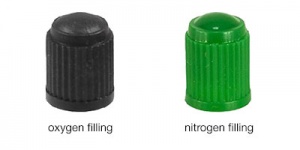They are usually about four inches long, black or silver and rod-shaped. We are talking about tire valves. What is the difference between the individual variations and also, what are the most important things to consider?
Rubber valves
The most common hint for a damaged valve is permanently decreasing air pressure. Valves are quite sensitive. Therefore valve caps should always be screwed tightly in order to protect the valve itself from dirt, dust and moisture.
Most tire manufacturers recommend the installation of a new tire valve for every new tire or after a usage of four years. Most of the so-called “snap-in valves” are made out of rubber. They are attached to the bead of the new tire. The installation itself is carried out by a tire specialist in a garage.
Each and every valve needs to pass several ISO standards. Examples for these are the maximum endurable pulling force during the mounting procedure and the hardness of the rubber at various temperatures including a 144 hours long test at minus 40 degrees.
Metal valves
Some drivers favor metal valves for their light-alloy rims mostly because of optical reasons. Metal valves are about three times more expensive than rubber valves but they can also be reused as long as they are working. These type of vales are more resistant and allow higher air pressure. Measures do not waste as much air as rubber valves.
However their biggest disadvantage is the inflexible nature of the material which can lead to damage or breaks when touching hard objects. For example, carelessly hitting a curb or bumpy rides into rough terrains can lead to the destruction of the valve.
Other reasons for the use of metal valves
Metal valves are the better option at higher speeds. They can handle the centrifugal force much better than rubber valves. They also do not bend as much. Rubber valves are only permitted up to a speed of 210 km / h according to the manufacturer’s specifications. In case of a tougher style of driving you should probably consider the use of metal valves.
Nitrogen filling
A colored valve cap is a strong indicator for a tire with a special nitrogen filling. In theory the advantage of this filling the reduction of air loss. You can still refill the tires by stopping at the next gas station to correct the pressure with common air pressure fillers. Nitrogen filling itself is only available from specialist dealers. Nitrogen fillings in car tires are not necessary since the alleged advantages appear to be marginal.


